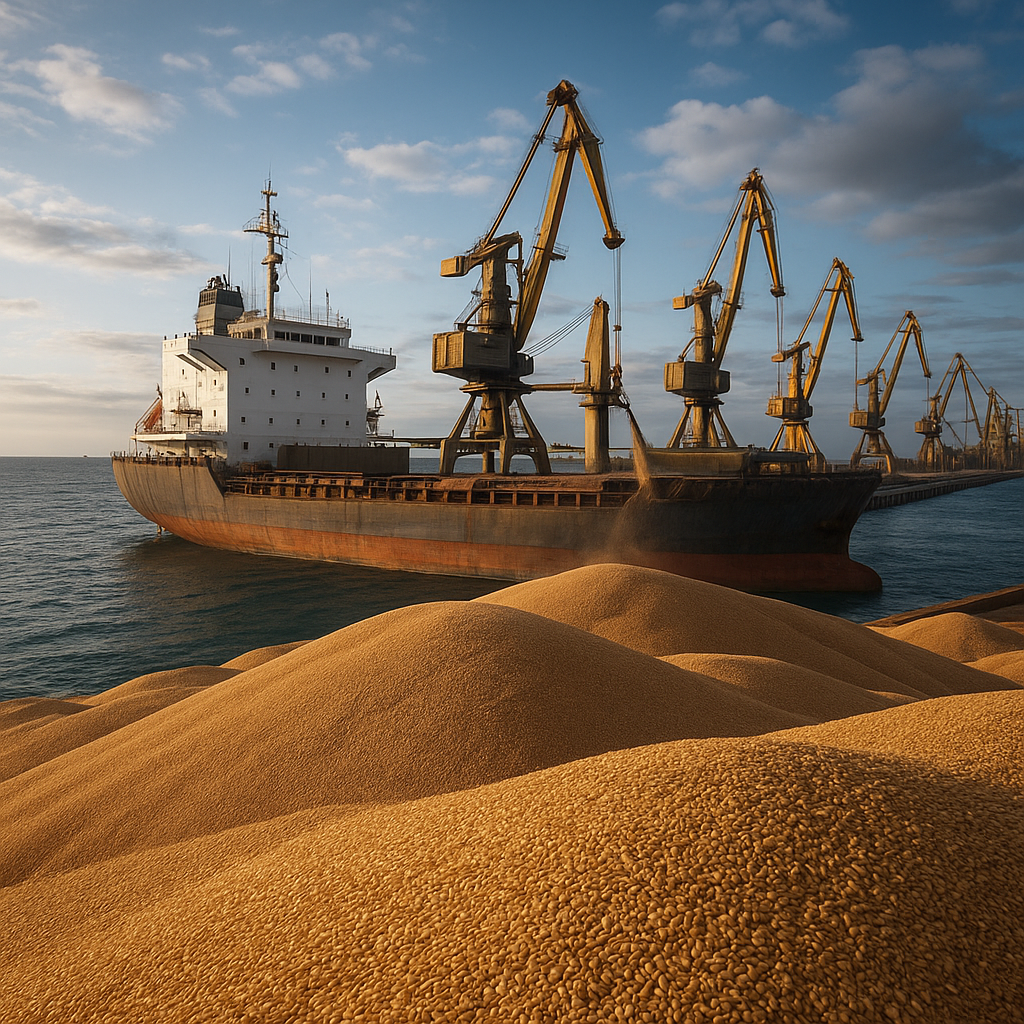The grain market is a dynamic and essential sector of the global economy, offering numerous opportunities for investors looking to diversify their portfolios. With the increasing demand for food, biofuels, and animal feed, understanding the trends and factors influencing grain prices is crucial for making informed investment decisions. This article will explore the current state of the grain market, the key drivers of price fluctuations, and the potential opportunities for investors in this vital industry.
Current State of the Grain Market
The grain market encompasses a variety of crops, including wheat, corn, rice, barley, and oats, each playing a significant role in global food security and trade. As of 2023, the grain market has experienced notable volatility due to several factors, including climate change, geopolitical tensions, and shifts in consumer preferences. The COVID-19 pandemic also had a lasting impact on supply chains, affecting production and distribution.
In recent years, the demand for grains has surged, driven by population growth and changing dietary habits. As more people adopt diets rich in protein, the need for animal feed has increased, further boosting grain consumption. Additionally, the rise of biofuels has created a new market for grains, particularly corn, which is used extensively in ethanol production.
Despite the challenges posed by climate change, which can lead to droughts and floods affecting crop yields, advancements in agricultural technology and practices have helped mitigate some of these risks. Precision farming, genetically modified organisms (GMOs), and sustainable farming practices are becoming more prevalent, allowing farmers to increase productivity and reduce environmental impact.
Key Drivers of Price Fluctuations
Understanding the factors that influence grain prices is essential for investors looking to capitalize on market opportunities. Several key drivers contribute to price fluctuations in the grain market:
- Weather Conditions: Weather plays a critical role in agricultural production. Droughts, excessive rainfall, and extreme temperatures can significantly impact crop yields, leading to supply shortages and price increases.
- Global Demand: The demand for grains is influenced by population growth, dietary changes, and economic development. Emerging markets, particularly in Asia and Africa, are experiencing rising demand for grains as their populations grow and become more affluent.
- Geopolitical Factors: Trade policies, tariffs, and geopolitical tensions can disrupt supply chains and affect grain prices. For instance, conflicts in major grain-producing regions can lead to uncertainty and volatility in the market.
- Currency Fluctuations: The strength of the U.S. dollar can impact grain prices, as most grains are traded in dollars. A stronger dollar can make U.S. grains more expensive for foreign buyers, potentially reducing demand.
- Technological Advancements: Innovations in agriculture, such as improved seed varieties and farming techniques, can enhance productivity and influence supply levels, thereby affecting prices.
Opportunities for Investors
Given the complexities of the grain market, investors have several avenues to explore for potential gains. Here are some opportunities worth considering:
1. Direct Investment in Agricultural Commodities
Investing directly in agricultural commodities, such as futures contracts for grains, can provide exposure to price movements. Futures contracts allow investors to buy or sell a specific quantity of grain at a predetermined price on a future date. This strategy can be profitable during periods of price volatility, but it also carries significant risk, as prices can fluctuate dramatically based on various factors.
2. Agricultural Stocks and ETFs
Investors can also consider purchasing stocks of companies involved in the agricultural sector, such as seed manufacturers, fertilizer producers, and grain processors. Exchange-traded funds (ETFs) that focus on agriculture can provide diversified exposure to the sector without the need to invest in individual stocks. These investment vehicles can be a more stable option for those looking to gain exposure to the grain market.
3. Sustainable Agriculture Investments
As sustainability becomes a priority for consumers and investors alike, opportunities in sustainable agriculture are on the rise. Companies that focus on organic farming, regenerative agriculture, and environmentally friendly practices are gaining traction. Investing in these companies not only aligns with ethical considerations but also positions investors to benefit from the growing demand for sustainable food products.
4. Agricultural Real Estate
Investing in agricultural real estate, such as farmland, can provide a tangible asset that appreciates over time. Farmland has historically been a stable investment, and with the increasing demand for food production, it is likely to remain a valuable asset. Investors can also benefit from rental income by leasing farmland to farmers.
5. Diversification through Grain-Related Products
Investors can explore opportunities in grain-related products, such as biofuels and animal feed. The growing demand for renewable energy sources has led to increased interest in biofuels, particularly ethanol derived from corn. Additionally, the livestock industry relies heavily on grains for animal feed, creating a consistent demand for these products.
Conclusion
The grain market presents a wealth of opportunities for investors willing to navigate its complexities. By understanding the current state of the market, the key drivers of price fluctuations, and the various investment avenues available, investors can position themselves to capitalize on the growing demand for grains. As global population continues to rise and dietary preferences evolve, the importance of grains in the economy will only increase, making it a sector worth considering for investment.













